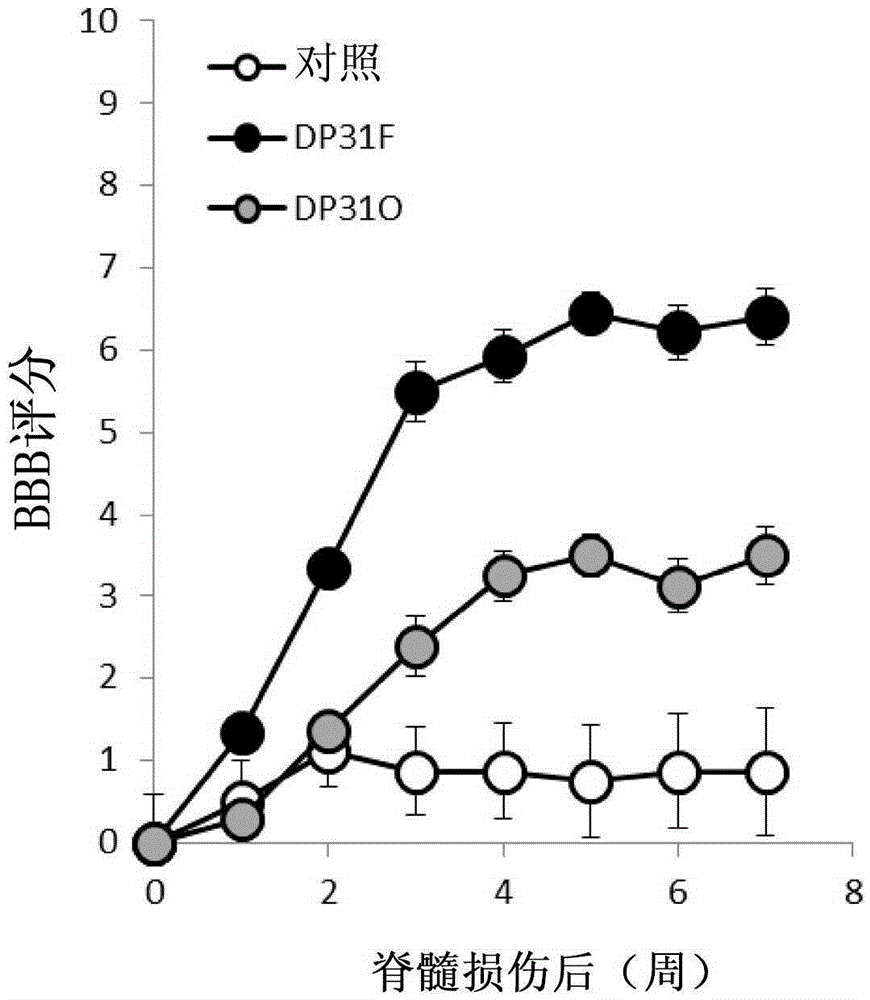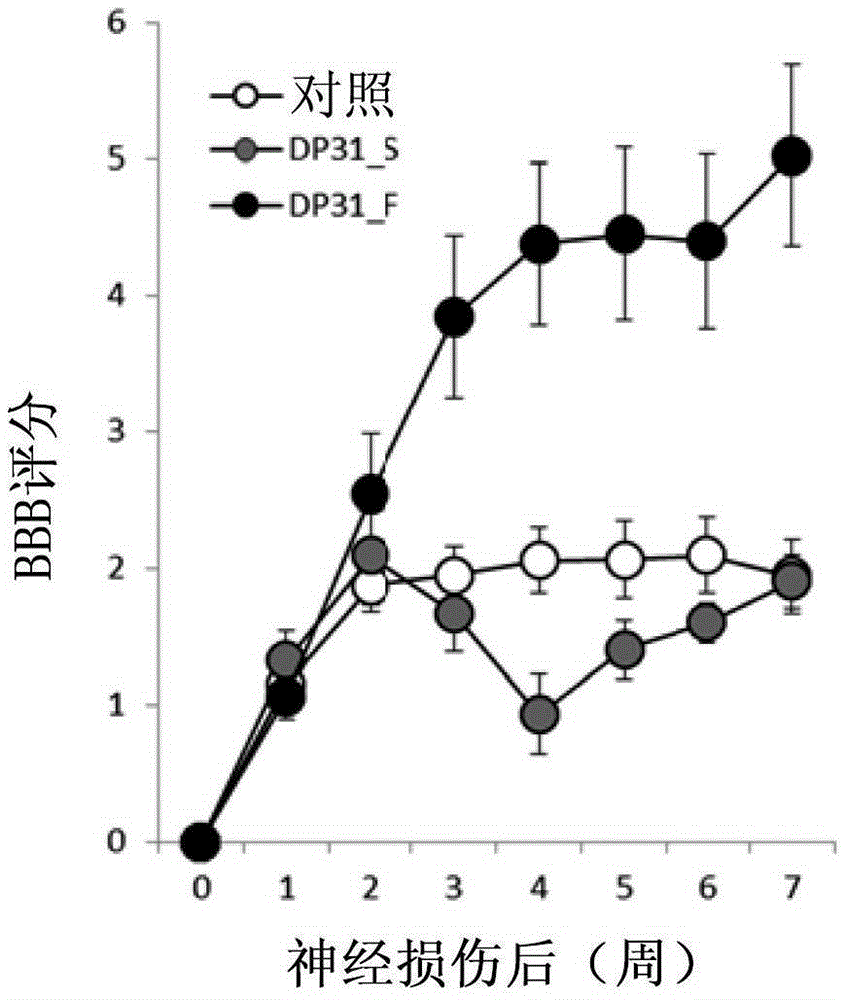Method for producing graft material for treating nerve damage
A transplantation material and nerve injury technology, which is applied in the field of manufacturing transplantation materials for nerve injury treatment, can solve the problems of undeveloped fundamental methods for treatment and difficulty in functional reconstruction, and achieve the effect of high motor function and high recovery effect.
- Summary
- Abstract
- Description
- Claims
- Application Information
AI Technical Summary
Problems solved by technology
Method used
Image
Examples
Embodiment 1
[0164] Example 1. The movement of total spinal cord resection model caused by different culture methods of dental pulp stem cells Influence of functional restoration effect 1
[0165] 1. Experimental method
[0166] 1-1. Animals and materials
[0167] Wistar rats (7 weeks old, female) were purchased from Japan SLC Company, and anesthetic pentobarbital (somnopentyl) was purchased from Kyoritsu Pharmaceutical Co., Ltd. Before carrying out animal experiments, based on the relevant regulations on the safety and welfare of animal experiments, an animal experiment plan was formulated according to the prescribed format, which was approved by the Animal Breeding and Animal Experiment Committee of Gifu Pharmaceutical University.
[0168] 1-2. Cell culture
[0169] The method of inducing, culturing and proliferating dental pulp stem cells from extracted teeth was carried out according to the published method (Tamaoki et al., JDentRes. 201089:773-778). The following cells were pre...
Embodiment 2
[0177] Example 2. Movement of total spinal cord resection model caused by different culture methods of dental pulp stem cells Influence of functional recovery effect 2
[0178] 1. Experimental method
[0179] 1-1. Animals and materials
[0180] Experimental animals were prepared in the same manner as in Example 1.
[0181] 1-2. Cell culture
[0182] The method of inducing, culturing and proliferating dental pulp stem cells from extracted teeth was carried out according to the published method (Tamaoki et al., JDentRes. 201089:773-778). The following cells were prepared: Dental pulp stem cells subcultured to passage 12 with MSCBM medium (LONZA), and dental pulp after subcultured 7-8 times with α-MEM medium (Sigma Company) containing 10% FCS Stem cells (DP31S); and dental pulp stem cells (DP31F) subcultured 7-8 times with α-MEM medium containing 10 ng / ml FGF2 and 10% FCS.
[0183] 1-3. Experimental method using full-cut model
[0184] The same total spinal cord resectio...
Embodiment 3
[0189] Example 3. The total spinal cord resection model caused by the difference in donors of dental pulp stem cells Influence of motor function recovery effect
[0190] 1. Experimental method
[0191] 1-1. Animals and materials
[0192] Experimental animals were prepared in the same manner as in Example 1.
[0193] 1-2. Cell culture
[0194] Dental pulp stem cells were induced from teeth extracted from three different donors (DP31, DP74, and DP264), cultured and proliferated according to a published method (Tamaoki et al., JDentRes. 201089:773-778) . The following cells were prepared: dental pulp stem cells (DP31F, DP74F and DP264F) from 3 different donors subcultured 7-8 times with α-MEM medium containing 10 ng / ml of FGF2 and 10% FCS.
[0195] 1-3. Experimental method using full-cut model
[0196] The same total spinal cord resection model as in Example 1 was prepared.
[0197] 2. Results
[0198] Same as Example 1, the recovery of motor function is evaluated by B...
PUM
 Login to View More
Login to View More Abstract
Description
Claims
Application Information
 Login to View More
Login to View More - R&D
- Intellectual Property
- Life Sciences
- Materials
- Tech Scout
- Unparalleled Data Quality
- Higher Quality Content
- 60% Fewer Hallucinations
Browse by: Latest US Patents, China's latest patents, Technical Efficacy Thesaurus, Application Domain, Technology Topic, Popular Technical Reports.
© 2025 PatSnap. All rights reserved.Legal|Privacy policy|Modern Slavery Act Transparency Statement|Sitemap|About US| Contact US: help@patsnap.com



